 The human brain is so very complex. One tiny change can make a tremendous difference, much like a computer. For example, when I lived in Ireland, I worked for a company that utilized a rather complex software program to manage revenue from various business sectors. In this system, it was important to right click and select paste rather than use “ctrl V”. After years of training my brain to use “ctrl V” it seemed near impossible to remember to right click and select paste.
The human brain is so very complex. One tiny change can make a tremendous difference, much like a computer. For example, when I lived in Ireland, I worked for a company that utilized a rather complex software program to manage revenue from various business sectors. In this system, it was important to right click and select paste rather than use “ctrl V”. After years of training my brain to use “ctrl V” it seemed near impossible to remember to right click and select paste.
I was a serious nightmare for our IT department in the UK. When a user used “ctrl V” they would lose an important function in the program which could only be restored by calling over to the team in the UK. No. This is not a story about being the annoying employee who called for help all the time, though I am sure that was also the case. Whenever I used “ctrl V”, I was corrupting the database’s data. Where? That’s a good question! We did not know exactly where. Reports would be generated, and the numbers would be wrong. The client would ask why numbers did not match. Other reporting problems would crop up. My little mistake created big problems due to the ripple effect of one little command.
That can also be true for our brains when a traumatic event happens, especially if there is a series of small traumatic events. The effects of less intense traumatic experiences may add up much like my continued use of “ctrl V”. Despite the size of the traumatic experience or its frequency, the ripple effect in our brains is unknown. Studies have shown that our resiliency to traumatic experiences is unpredictable, and I assume this may be attributed to the complex functioning of our brains. Nonetheless, trauma has an effect even if it cannot be predicted.
Another point my database example illustrates is how our brains often wire themselves to a specific behavior pattern that can be difficult to change without intentional effort. I often refer to this as “the cattle path” quality of the well-known neuroscience phrase “fire together, wire together”. Much like a cattle path groove that becomes deep and well defined, my brain had strongly mapped the behavior to use “ctrl V”. The behavior was second nature. Before I even thought about what I was doing I was using the function, almost like watching myself select the wrong answer. The embarrassment of calling over to the UK became quite shaming. I had to work hard to change my automatic response to transferring data.
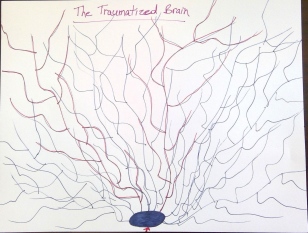 This is how our brain is on trauma! With repeated trauma, like childhood abuse, our brain maps a strong response to these incidences. The response can be over excitement of our amygdala (panic center of the brain: fight, flight, or freeze) or under activation of our amygdala that prevents us from keeping ourselves safe. These maladaptive paths become so strong it is like the deep cattle paths where grass becomes so trampled all you can see now is a groove of dirt. Cows will not make a new path without the right incentive, bringing their awareness to fresh grass to eat. Our brains are the same way when healing from trauma.
This is how our brain is on trauma! With repeated trauma, like childhood abuse, our brain maps a strong response to these incidences. The response can be over excitement of our amygdala (panic center of the brain: fight, flight, or freeze) or under activation of our amygdala that prevents us from keeping ourselves safe. These maladaptive paths become so strong it is like the deep cattle paths where grass becomes so trampled all you can see now is a groove of dirt. Cows will not make a new path without the right incentive, bringing their awareness to fresh grass to eat. Our brains are the same way when healing from trauma.
Telling someone to stop doing whatever automatic response their brain engages in is not helpful. It does not change the mapping of the brain, and in some cases strengthens the maladaptive mapping. One of the first things I do with clients who have a significant trauma history is to train, or re-train, their brains what it is like to be relaxed and feel safe. It is excessively repetitive for a reason. During the process, client’s may not feel a change. After several months they notice their thinking is different or their response time to triggers in their life has lengthened so they have more time to decide on a different response. Sometimes, a few months pass and a client is able to have an “a-ha!” moment they would not be able to experience during their first session. Fight, flight, or freeze responses would have been too intense to hear or experience an alternate perspective. After the amygdala has been trained to be calmer, healing work can begin. The therapeutic work becomes more efficient after a healthy foundation has been established. New wiring. Productive wiring.
Do you need new wiring? Do you know someone who could benefit from new wiring? If you live in the St. Louis Metropolitan area, I would love to help, even if that means helping you find another therapist to walk your journey with you.
Illustration: Changing Your Wiring




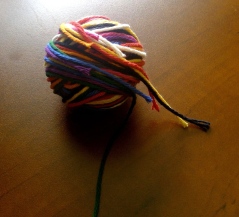
 As we deal with grief and other traumatic events, our emotional experience is much like this ball of yarn. We do not simply feel sad and depressed. We do not feel sad and depressed followed by unending joy. We vacillate between several positive and unpleasant emotions for quite some time before making peace with our traumatic circumstance.
As we deal with grief and other traumatic events, our emotional experience is much like this ball of yarn. We do not simply feel sad and depressed. We do not feel sad and depressed followed by unending joy. We vacillate between several positive and unpleasant emotions for quite some time before making peace with our traumatic circumstance.

 As we continue to see schools closed and expectations to work from home rise, your confined time with your family may begin to take its toll on your household. This is the time of year when we often hang onto the hope that the weather will soon change, and cabin fever will come to an end. And then it gets a little Jurassic Park in the neighborhood. “We’re back….in the car.” Can anyone else relate?
As we continue to see schools closed and expectations to work from home rise, your confined time with your family may begin to take its toll on your household. This is the time of year when we often hang onto the hope that the weather will soon change, and cabin fever will come to an end. And then it gets a little Jurassic Park in the neighborhood. “We’re back….in the car.” Can anyone else relate?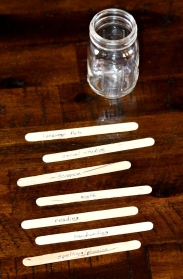 First, let’s talk about schedule and structure. If you read my colleague Andria’s blog (
First, let’s talk about schedule and structure. If you read my colleague Andria’s blog ( This activity is a great way to teach prioritization and organization of daily tasks. Kids need boundaries and expectations to help them make sense of their world and feel safe. By setting aside a time for their work you are providing the structure that they need to feel secure about what is happening in their world right now. By allowing them to choose the order in which they tackle their schoolwork they learn to have autonomy amid stressful situations, which builds resilience.
This activity is a great way to teach prioritization and organization of daily tasks. Kids need boundaries and expectations to help them make sense of their world and feel safe. By setting aside a time for their work you are providing the structure that they need to feel secure about what is happening in their world right now. By allowing them to choose the order in which they tackle their schoolwork they learn to have autonomy amid stressful situations, which builds resilience. It is important to give them multiple options for how to solve the problems. For example, younger children who are adding or subtracting can: draw dots, use mathlink blocks, use marbles, or use their fingers. If you do not have something readily available, improvise! You can make “manipulatives” with a hole punch and some construction paper in their favorite colors. You can also use real coins. Pennies can be used for smaller addition/subtraction problems.
It is important to give them multiple options for how to solve the problems. For example, younger children who are adding or subtracting can: draw dots, use mathlink blocks, use marbles, or use their fingers. If you do not have something readily available, improvise! You can make “manipulatives” with a hole punch and some construction paper in their favorite colors. You can also use real coins. Pennies can be used for smaller addition/subtraction problems. ng the question: will you keep me safe? Safety can take on multiple definitions in a child or adolescent mind. Please keep in mind that boundary testing does not equate poor behavior. They have a need that needs to be met.
ng the question: will you keep me safe? Safety can take on multiple definitions in a child or adolescent mind. Please keep in mind that boundary testing does not equate poor behavior. They have a need that needs to be met. eir skill level. If you do not have a matching card, you talk about why. When you pick outrageous cards because you do not have a match, you can still do a lot of laughing. It is essential to create opportunities for laughter during this time.
eir skill level. If you do not have a matching card, you talk about why. When you pick outrageous cards because you do not have a match, you can still do a lot of laughing. It is essential to create opportunities for laughter during this time.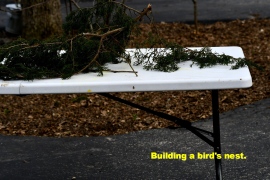 ts you can do outside that meets their teacher’s criteria. At the same time, the kids get their daily dose of vitamin D, which helps keep the peace indoors. Search the internet for ideas if needed and let them learn while having a brain break. One of my favorite books for messy play is Usborne’s 365 Days of Science.
ts you can do outside that meets their teacher’s criteria. At the same time, the kids get their daily dose of vitamin D, which helps keep the peace indoors. Search the internet for ideas if needed and let them learn while having a brain break. One of my favorite books for messy play is Usborne’s 365 Days of Science.



 Life and hunting for sharks’ teeth are a lot alike. How? Well, for starters, both take patience! Have you ever hunted for shark teeth? It’s something I began learning about a few years ago. Historically, I am not a beach person. You must step up your sunscreen game, sand gets where it should not, and who really knows what is in that water at this very moment. Oh. You also must find a swimsuit you like. I was more interested in a comfortable pair of jeans and a good hike…..Then I became a parent.
Life and hunting for sharks’ teeth are a lot alike. How? Well, for starters, both take patience! Have you ever hunted for shark teeth? It’s something I began learning about a few years ago. Historically, I am not a beach person. You must step up your sunscreen game, sand gets where it should not, and who really knows what is in that water at this very moment. Oh. You also must find a swimsuit you like. I was more interested in a comfortable pair of jeans and a good hike…..Then I became a parent. During our time at the beach, my husband began to look for shark teeth. At first it was hard. Through our adventures we happened to befriend a local couple. The wife grew up at this beach and has a rich family history of fossil hunting, which includes shark teeth. My husband would comb the beach then sit with our friend to sort through what he found and decide if there was anything of value in his stash of treasure. The shark teeth were obvious. Other fossils were more intriguing since you must examine them more closely.
During our time at the beach, my husband began to look for shark teeth. At first it was hard. Through our adventures we happened to befriend a local couple. The wife grew up at this beach and has a rich family history of fossil hunting, which includes shark teeth. My husband would comb the beach then sit with our friend to sort through what he found and decide if there was anything of value in his stash of treasure. The shark teeth were obvious. Other fossils were more intriguing since you must examine them more closely.
 Talk about aggravating! Well, aggravating for fossil hunters. My treasure box had very little to boast. Throughout the week I continued to look for opportunities to search the beach. I decided to make a commitment to pick up everything I saw that resembled the color of shark teeth when I searched. My eyes needed to be trained in what to look for if I was going to be successful. A lot of junk ended up in my bag. More teeth ended up in my bag too!
Talk about aggravating! Well, aggravating for fossil hunters. My treasure box had very little to boast. Throughout the week I continued to look for opportunities to search the beach. I decided to make a commitment to pick up everything I saw that resembled the color of shark teeth when I searched. My eyes needed to be trained in what to look for if I was going to be successful. A lot of junk ended up in my bag. More teeth ended up in my bag too! Looking for shark teeth during high tide versus low tide can also parallel day-to-day life challenges. High tide searching can often be more discouraging or stressful than low tide searching, even if high tide may bring more teeth to us. High tide brings in tumultuous water that requires us to be more vigilant for the roaming teeth and have quicker reflexes to snatch them up before the next wave washes them away. Implementing coping strategies during the stressors of life may mirror this fleeting behavior. Before you are able to snatch up the shark tooth, the window of opportunity is gone.
Looking for shark teeth during high tide versus low tide can also parallel day-to-day life challenges. High tide searching can often be more discouraging or stressful than low tide searching, even if high tide may bring more teeth to us. High tide brings in tumultuous water that requires us to be more vigilant for the roaming teeth and have quicker reflexes to snatch them up before the next wave washes them away. Implementing coping strategies during the stressors of life may mirror this fleeting behavior. Before you are able to snatch up the shark tooth, the window of opportunity is gone. When we begin therapy, there can be an expectation that we instantly get what we need and are able to put it into practice. Unfortunately, the process of therapy is more often like the search for shark teeth. We may need to learn and relearn skills until we internalize them. We may not be able to access our skills right away. It may feel like throwing something at our circumstance until “something sticks”, just like my picking up anything that resembled shark teeth until I trained my eye. There is a lot of error before there is success. There has been a lot of missing my teeth before the window of opportunity closes. But…..eventually……I grasped the knowledge of what I was looking for and acquired less junk in my treasure chest.
When we begin therapy, there can be an expectation that we instantly get what we need and are able to put it into practice. Unfortunately, the process of therapy is more often like the search for shark teeth. We may need to learn and relearn skills until we internalize them. We may not be able to access our skills right away. It may feel like throwing something at our circumstance until “something sticks”, just like my picking up anything that resembled shark teeth until I trained my eye. There is a lot of error before there is success. There has been a lot of missing my teeth before the window of opportunity closes. But…..eventually……I grasped the knowledge of what I was looking for and acquired less junk in my treasure chest.


 The cup is often the focus of some pretty interesting, if not cliché, metaphors in our society. Is the cup half full or half empty? You can’t pour from an empty cup. Does your cup runneth over? We also see the cup used for things like disguising the taste of something else: alcohol, poison, medications, etc. The cup seems to represent many things in our life, which begs the question: What’s in your cup?
The cup is often the focus of some pretty interesting, if not cliché, metaphors in our society. Is the cup half full or half empty? You can’t pour from an empty cup. Does your cup runneth over? We also see the cup used for things like disguising the taste of something else: alcohol, poison, medications, etc. The cup seems to represent many things in our life, which begs the question: What’s in your cup? To get started with this activity, I
To get started with this activity, I Second, combine flour and water until you create a thin paste, or 1:3 ratio for water and glue. The best way for me to do this is to get a blender bottle and add the water first. Slowly add the flour a couple of tablespoons at a time until your thin paste forms. Keep what you are not using in the cup so you can shake it up as needed. Find a small bowl to pour some mache paste into. A glass prep bowl that holds a cup or two of liquid is perfect for this. Using glue instead of flour will make the colors turn out more vibrant and provide a different sensory experience.
Second, combine flour and water until you create a thin paste, or 1:3 ratio for water and glue. The best way for me to do this is to get a blender bottle and add the water first. Slowly add the flour a couple of tablespoons at a time until your thin paste forms. Keep what you are not using in the cup so you can shake it up as needed. Find a small bowl to pour some mache paste into. A glass prep bowl that holds a cup or two of liquid is perfect for this. Using glue instead of flour will make the colors turn out more vibrant and provide a different sensory experience.
 Are you ready for a metaphor? I hope so because we are jumping in now. In the United States of America, we have a pretty good water treatment system anywhere you go within the country. That does not mean water will not taste different from place to place. Afterall, we are quite fascinated with bottled water! Still, the water is safe to drink due to well documented protocols for treating water to make it potable. That is not true in every part of the world! In fact, when I was in Africa several years ago, I experienced the truth in drinking unhealthy water firsthand. I was so sick! Fortunately, I was traveling with a team of physicians as well. The experience was quite eye-opening. We collectively agreed that what happens in Africa stays in Africa since there were many such experiences among our team.
Are you ready for a metaphor? I hope so because we are jumping in now. In the United States of America, we have a pretty good water treatment system anywhere you go within the country. That does not mean water will not taste different from place to place. Afterall, we are quite fascinated with bottled water! Still, the water is safe to drink due to well documented protocols for treating water to make it potable. That is not true in every part of the world! In fact, when I was in Africa several years ago, I experienced the truth in drinking unhealthy water firsthand. I was so sick! Fortunately, I was traveling with a team of physicians as well. The experience was quite eye-opening. We collectively agreed that what happens in Africa stays in Africa since there were many such experiences among our team. How are the things in your cup impacting your life, daily and long-term? Research demonstrates that stress can be deadly. Look at the group of things that you wish were in your cup and the group of things you wish were not in your cup. How can you start filtering what is in your cup? What treatment process do you need to make what is in your cup healthy for your body? Do you need to rebalance your nutritional intake? Exercise more? Take a break from electronics? Take a vacation? Seek therapy from a counselor trained in helping individuals who need help in the areas you need help with or healing from? How do you start filtering out the toxic things in your life and start adding healthy things from your wish list into your cup?
How are the things in your cup impacting your life, daily and long-term? Research demonstrates that stress can be deadly. Look at the group of things that you wish were in your cup and the group of things you wish were not in your cup. How can you start filtering what is in your cup? What treatment process do you need to make what is in your cup healthy for your body? Do you need to rebalance your nutritional intake? Exercise more? Take a break from electronics? Take a vacation? Seek therapy from a counselor trained in helping individuals who need help in the areas you need help with or healing from? How do you start filtering out the toxic things in your life and start adding healthy things from your wish list into your cup?
 Some might see my blog title and think I am a coffee addict. While I do love my morning coffee routine, and meeting friends for coffee, the title “Therapeutic Java” does not come from an addiction to coffee. The title was birthed out of the symbolism of coffee in multiple cultures around the world. It also represents aspects of my worldview.
Some might see my blog title and think I am a coffee addict. While I do love my morning coffee routine, and meeting friends for coffee, the title “Therapeutic Java” does not come from an addiction to coffee. The title was birthed out of the symbolism of coffee in multiple cultures around the world. It also represents aspects of my worldview. In 2012, I participated in a counseling trip to Ethiopia in Africa. Our role as counselors was to be available at medical clinics to provide emotional support to woman and children, who are especially marginalized in that area of the world. The clinic was also open to men at various locations. This experience is particularly important to the title of my blog since Ethiopia is the birthplace of coffee. Coffee originally comes from Kaffe, Ethiopia.
In 2012, I participated in a counseling trip to Ethiopia in Africa. Our role as counselors was to be available at medical clinics to provide emotional support to woman and children, who are especially marginalized in that area of the world. The clinic was also open to men at various locations. This experience is particularly important to the title of my blog since Ethiopia is the birthplace of coffee. Coffee originally comes from Kaffe, Ethiopia. Ethiopia values coffee so much they have a ceremony for it. During my two weeks working with the clinic, I was honored to participate in several coffee ceremonies that took place in different contexts. My first experience was at clinic headquarters. In a coffee ceremony, you grind the coffee beans by hand. Next, you use a special coffee pot to brew the grinds. Third, you add sugar to special coffee cups, then poor the coffee over the sugar. Milk is rarely used. During a coffee ceremony food is served while frankincense burns. The importance of this ceremony is relationship. I also participated in the ceremony at a young woman’s house in an impoverished area of town where it was served along with kolo (roasted barely), a staple food item. The third place where I enjoyed this ceremony was after a meal at a local restaurant in town.
Ethiopia values coffee so much they have a ceremony for it. During my two weeks working with the clinic, I was honored to participate in several coffee ceremonies that took place in different contexts. My first experience was at clinic headquarters. In a coffee ceremony, you grind the coffee beans by hand. Next, you use a special coffee pot to brew the grinds. Third, you add sugar to special coffee cups, then poor the coffee over the sugar. Milk is rarely used. During a coffee ceremony food is served while frankincense burns. The importance of this ceremony is relationship. I also participated in the ceremony at a young woman’s house in an impoverished area of town where it was served along with kolo (roasted barely), a staple food item. The third place where I enjoyed this ceremony was after a meal at a local restaurant in town.
 My counseling practice is grounded in the therapeutic nature of authentic relationship, much like we experience with a friend or family member while enjoying a cup of coffee. Through the interpersonal process, I provide authentic reflections, insights into behavior, and therapeutic, corrective relationship experiences. I also use the language of childhood, play, to restore identity, improve interpersonal skills, and heal emotional/mental health injuries across all ages.
My counseling practice is grounded in the therapeutic nature of authentic relationship, much like we experience with a friend or family member while enjoying a cup of coffee. Through the interpersonal process, I provide authentic reflections, insights into behavior, and therapeutic, corrective relationship experiences. I also use the language of childhood, play, to restore identity, improve interpersonal skills, and heal emotional/mental health injuries across all ages. 



 When someone is significantly injured by either repetitive smaller offenses, a single gigantic offense, or repetitive gigantic offense, the left and the right sides of our brain can become “offline” from each. We stew in our hurt. We ruminate in our anguish. We repeat the story of what happened or what continues to happen, and we get on a mental loop. Sometimes it feels like “if I just tell the story one more time I’ll find some new revelation to fix, repair, restore, or stop the damage”. “If I just said it enough time, the person will realize how they have hurt me and fix it, repent, become sorrowful”. Or, “if I say it enough times I’ll suddenly find the answer to feeling better”.
When someone is significantly injured by either repetitive smaller offenses, a single gigantic offense, or repetitive gigantic offense, the left and the right sides of our brain can become “offline” from each. We stew in our hurt. We ruminate in our anguish. We repeat the story of what happened or what continues to happen, and we get on a mental loop. Sometimes it feels like “if I just tell the story one more time I’ll find some new revelation to fix, repair, restore, or stop the damage”. “If I just said it enough time, the person will realize how they have hurt me and fix it, repent, become sorrowful”. Or, “if I say it enough times I’ll suddenly find the answer to feeling better”.




 point of this assignment is to highlight positive interpersonal experiences initiated by your child. Children who have been referred to a mental health counselor, or consistently receive disciplinary action at school, often hear a lot about what they are not doing well, and what they are doing well typically takes a backseat. This log is intended to highlight the good things your child is doing and to reinforce the behaviors adults in their life are trying to teach them.
point of this assignment is to highlight positive interpersonal experiences initiated by your child. Children who have been referred to a mental health counselor, or consistently receive disciplinary action at school, often hear a lot about what they are not doing well, and what they are doing well typically takes a backseat. This log is intended to highlight the good things your child is doing and to reinforce the behaviors adults in their life are trying to teach them.
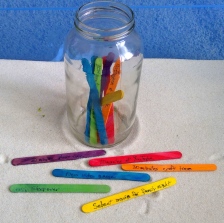 night, select the next game at family game night, 20 minutes of free-choice time, 30 minutes of craft time, etc. These activities should be things that may be distractions for your child when completing necessary tasks, like homework. Short-term rewards should be instantly gratifying yet contained. The rewards should also be consistent with your house/office/school rules. The sky is not the limit.
night, select the next game at family game night, 20 minutes of free-choice time, 30 minutes of craft time, etc. These activities should be things that may be distractions for your child when completing necessary tasks, like homework. Short-term rewards should be instantly gratifying yet contained. The rewards should also be consistent with your house/office/school rules. The sky is not the limit. they may not want to redeem a reward right away. This is great! Create a reward currency, such as using a one-inch hole punch and cardboard or use marbles (or other safe item) and let them fill a container with the reward currency and choose when they would like to redeem the reward. This will improve the child’s ability to know their limits and honor their window of tolerance. It also helps you know when to increase the difficulty of the reward.
they may not want to redeem a reward right away. This is great! Create a reward currency, such as using a one-inch hole punch and cardboard or use marbles (or other safe item) and let them fill a container with the reward currency and choose when they would like to redeem the reward. This will improve the child’s ability to know their limits and honor their window of tolerance. It also helps you know when to increase the difficulty of the reward.


 positive emotion.
positive emotion.


 Often, hearing about the death of an infant is heartbreaking and confusing. Often, we are, unavoidably, faced with our own beliefs about death, dying, and any afterlife. Sometimes being faced with these tough topics diverts attention from what is happening in the here and now for the woman and family that directly experienced the loss. Instead, we are consumed with our own discomfort about the loss of the baby. Being present for the family or woman who experienced the loss can feel overwhelming, confusing, sad, disconnecting, incomprehensible, frightening, and much more.
Often, hearing about the death of an infant is heartbreaking and confusing. Often, we are, unavoidably, faced with our own beliefs about death, dying, and any afterlife. Sometimes being faced with these tough topics diverts attention from what is happening in the here and now for the woman and family that directly experienced the loss. Instead, we are consumed with our own discomfort about the loss of the baby. Being present for the family or woman who experienced the loss can feel overwhelming, confusing, sad, disconnecting, incomprehensible, frightening, and much more.
 r a woman who has lost an infant to feel supported in a way that helps her to lean into her grief in a tolerable way. Just like Goldie Locks, her grief experience needs to be not too hard and not too soft. There is a just right process for walking through her grief story. Each woman’s just right grieving process is different. As a family member or friend, you can help the bereaved mother in your life find her just right path by asking questions and being a present listener. Being present and adaptable to your bereaved mother’s needs facilitates the process of mourning.
r a woman who has lost an infant to feel supported in a way that helps her to lean into her grief in a tolerable way. Just like Goldie Locks, her grief experience needs to be not too hard and not too soft. There is a just right process for walking through her grief story. Each woman’s just right grieving process is different. As a family member or friend, you can help the bereaved mother in your life find her just right path by asking questions and being a present listener. Being present and adaptable to your bereaved mother’s needs facilitates the process of mourning.